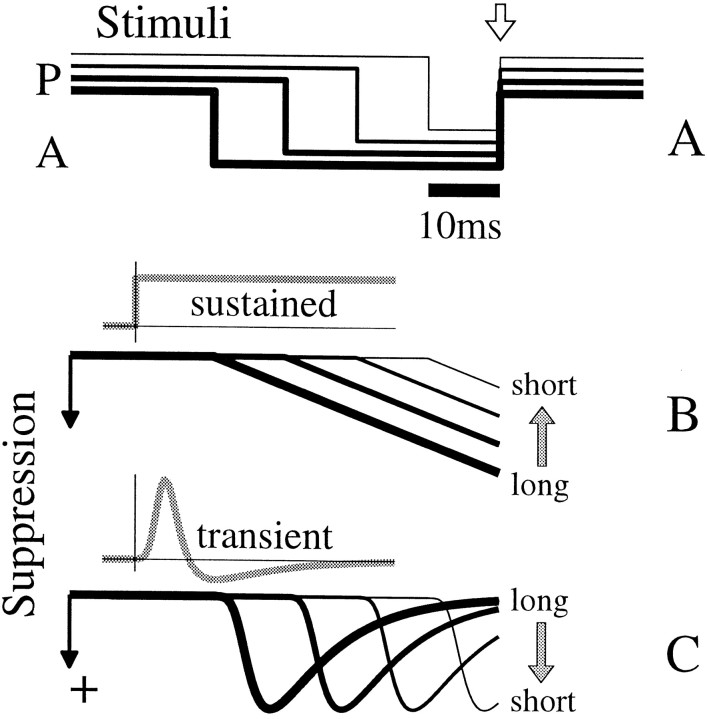Fig. 9.
Two conceptual models of suppression activated during an antipreferred pulse make opposite predictions.A, Four stimulus sequences with various duration A pulses are aligned to the AP transition (open arrow).Thicker traces show stimuli with longer A pulses. Stimulus traces are offset vertically for clarity here, but traces inB and C have no vertical offset.B, The time course of suppression that resulted from a sustained integration of the A pulses is plotted withlines of the same thickness used for the stimuli in A. The stimuli were convolved with thegray step function, which models suppression that accumulates over time. The suppression was larger for longer A pulses (downward indicates stronger suppression). C, When the stimuli were convolved with a fast, transient function (gray line), suppression for longer A pulses had decayed more than that for shorter pulses at the time of the AP transition (right ends of lines). This trend is opposite to that in B.

